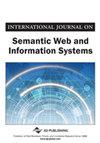使用ai驱动的注视点渲染和超分辨率的云边缘协作游戏框架
IF 5.6
4区 计算机科学
Q2 COMPUTER SCIENCE, ARTIFICIAL INTELLIGENCE
International Journal on Semantic Web and Information Systems
Pub Date : 2023-04-20
DOI:10.4018/ijswis.321751
引用次数: 0
摘要
云游戏(CG)逐渐流行起来。通过在云端平衡共享计算资源,CG技术允许那些没有昂贵硬件的人使用低端设备享受AAA级游戏。然而,流媒体游戏视频对带宽的要求很高,大规模部署会导致骨干网拥塞,带宽费用昂贵。为了应对这一挑战,作者提出了一种创新的边缘辅助计算架构,该架构协同使用人工智能驱动的注视点渲染(FR)和超分辨率(SR)。使用FR,云服务器可以以较低的分辨率流式传输游戏视频,显著减少传输的数据量。然后,边缘服务器将使用特定于游戏的SR模型对视频进行升级,恢复视频的质量,特别是对于玩家最关注的区域。作者构建了一个名为FRSR的原型系统,并进行了全面、客观的对比实验,证明该架构与经典CG实现相比,在相同的感知质量下,可以减少39.47%的带宽使用。本文章由计算机程序翻译,如有差异,请以英文原文为准。
A Cloud-Edge Collaborative Gaming Framework Using AI-Powered Foveated Rendering and Super Resolution
Cloud gaming (CG) has gradually gained popularity. By leveling shared computing resources on the cloud, CG technology allows those without expensive hardware to enjoy AAA games using a low-end device. However, the bandwidth requirement for streaming game video is high, which can cause backbone network congestion for large-scale deployment and expensive bandwidth bills. To address this challenge, the authors proposed an innovative edge-assisted computing architecture that collaboratively uses AI-powered foveated rendering (FR) and super-resolution (SR). Using FR, the cloud server can stream gaming video in lower resolution, significantly reducing the transmitted data volume. The edge server will then upscale the video using a game-specific SR model, recovering the quality of the video, especially for the areas players pay the most attention. The authors built a prototype system called FRSR and did thorough, objective comparative experiments to demonstrate that this architecture can reduce bandwidth usage by 39.47% compared with classic CG implementation for similar perceived quality.
求助全文
通过发布文献求助,成功后即可免费获取论文全文。
去求助
来源期刊
CiteScore
6.20
自引率
12.50%
发文量
51
审稿时长
20 months
期刊介绍:
The International Journal on Semantic Web and Information Systems (IJSWIS) promotes a knowledge transfer channel where academics, practitioners, and researchers can discuss, analyze, criticize, synthesize, communicate, elaborate, and simplify the more-than-promising technology of the semantic Web in the context of information systems. The journal aims to establish value-adding knowledge transfer and personal development channels in three distinctive areas: academia, industry, and government.

 求助内容:
求助内容: 应助结果提醒方式:
应助结果提醒方式:


